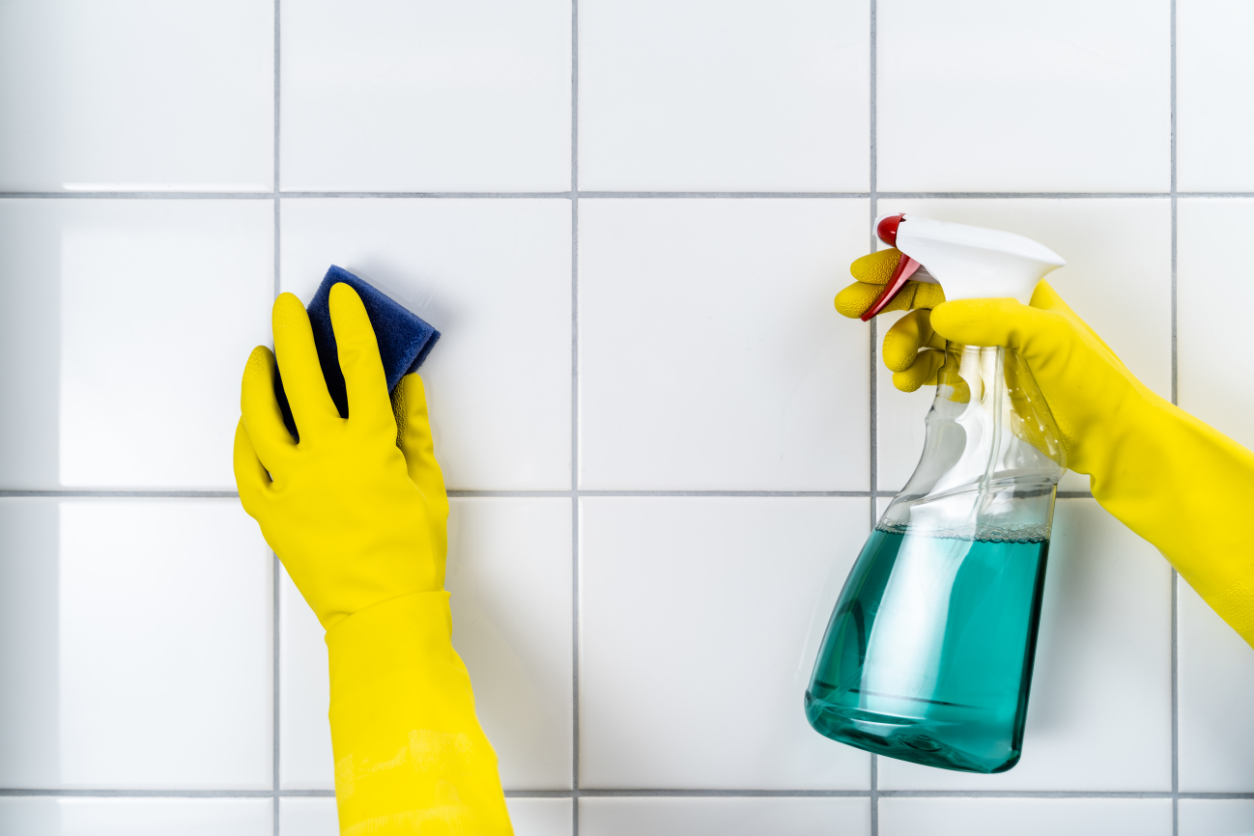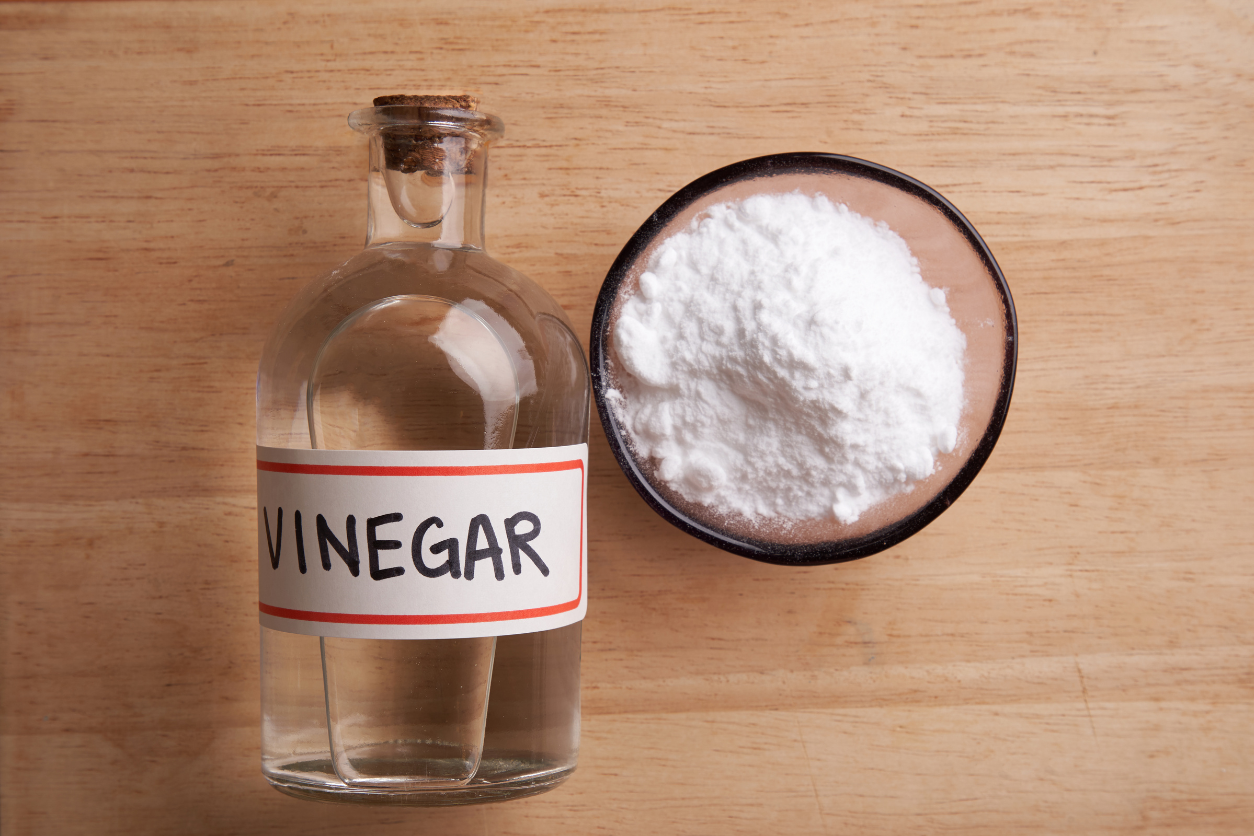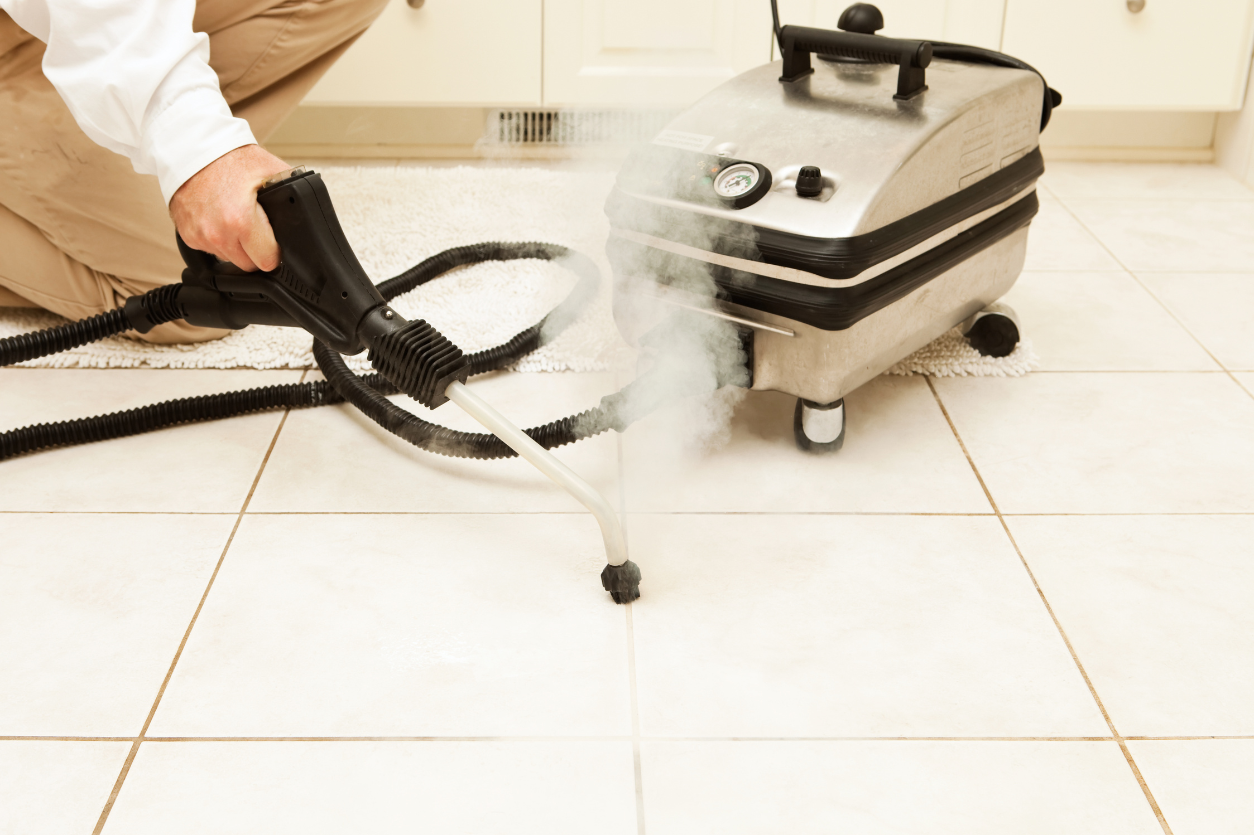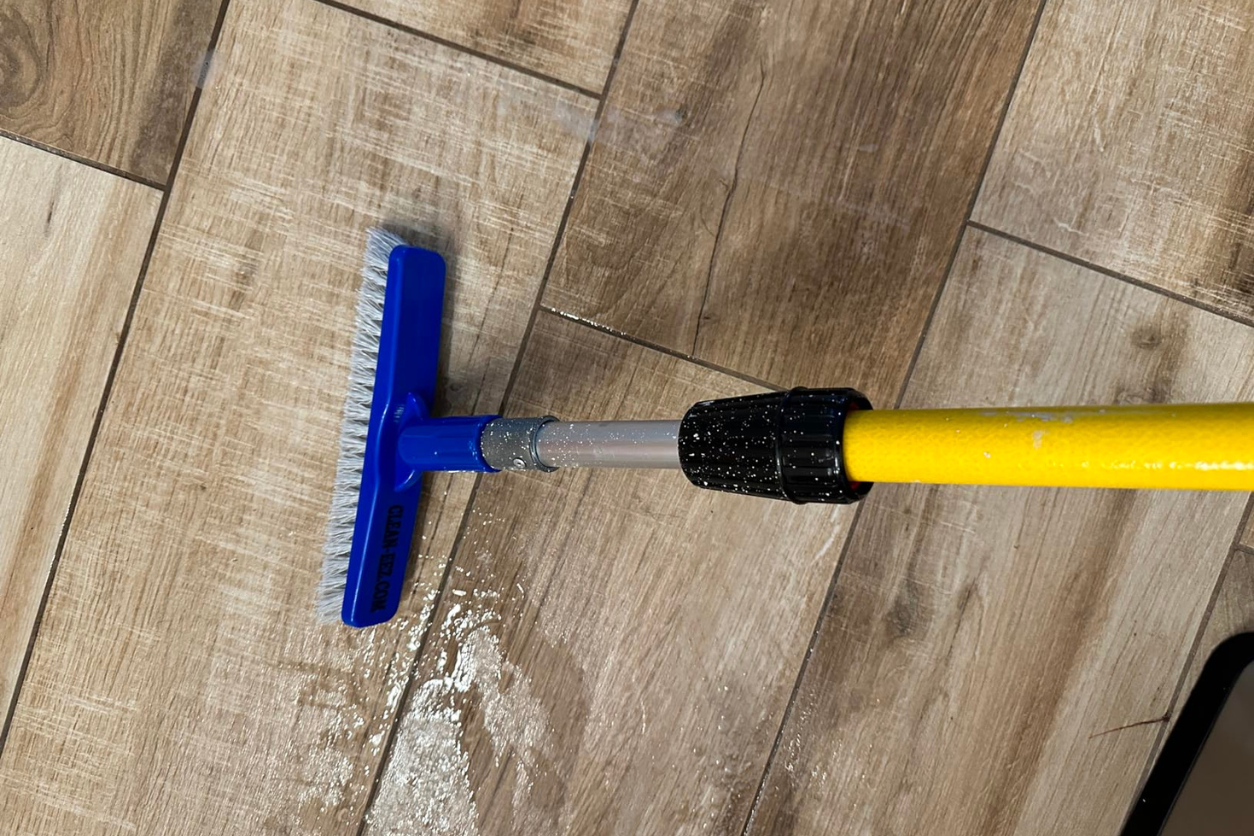How to Clean Grout: 3 Tried and Tested Methods That Actually Work

Grout. It’s one of those things we rarely think about until it becomes glaringly obvious that it needs attention. Whether it’s the lines between the tiles in your bathroom, kitchen backsplash, or even on the floor, grout can be a magnet for dirt, stains, and mold over time. And when it’s dirty, it makes the whole space look worse. Keeping your grout clean isn’t just about aesthetics; it’s also about maintaining a healthy environment, especially in areas where moisture is high, like bathrooms. Ignoring dirty grout can lead to bigger issues like mold buildup, which you definitely don’t want lurking in your home.
Related: How to Clean All Types of Tile Flooring
So, how do you clean grout properly? It’s not always as simple as scrubbing with a bit of soap and water. Depending on the type of grout and the stains you’re dealing with, there are different methods you can try.
Why Is Cleaning Grout Important?

Grout tends to absorb a lot of what you throw at it — water, dirt, and even oils from cooking. It’s a porous material, which means it can easily trap bacteria, mold, and mildew if left untreated. This can make a once-bright kitchen or bathroom feel dingy and unwelcoming. Beyond that, dirty grout can lead to more than just visual issues. In bathrooms, especially, mold growth in grout can become a health concern, particularly for people with allergies or respiratory issues. Regular cleaning keeps your space looking fresh and helps maintain a healthier environment overall.
But the benefits aren’t just limited to your home’s cleanliness and safety. Cleaning grout can actually extend the lifespan of your tiles. Dirt and grime that settle into the grout can erode the material over time, which can lead to cracked or broken tiles.
The Best Methods for Cleaning Grout
Grout cleaning can be a tedious task, but with the right method, it’s manageable. Whether you prefer a DIY approach or more heavy-duty cleaning solutions, here’s a breakdown of the most effective cleaning methods.
1. The DIY Baking Soda and Vinegar Method

A tried-and-true home remedy for grout cleaning is a simple mixture of baking soda and vinegar. This method is perfect for smaller areas that don’t require deep cleaning. Start by mixing baking soda with a small amount of water to form a paste. Apply the paste to the grout, then spray white vinegar over the top. You’ll see some fizzing — that’s the chemical reaction doing its job to break down dirt and grime. Let the mixture sit for a few minutes before scrubbing the grout with a brush.
For this, a long-handle brush can make the job easier, especially if you’re working on floors. Not only will it help you avoid the discomfort of kneeling or bending down for long periods, but it also provides more leverage, allowing you to scrub harder without tiring out. After scrubbing, rinse the area with water to remove any residue, and your grout should look noticeably cleaner.
2. Steam Cleaning

If you have a steam cleaner, this method can be highly effective, particularly for bathrooms and kitchens where mold and mildew may have set in. Steam cleaners use pressurized steam to break down and lift away dirt, bacteria, and grime without the need for harsh chemicals. Many models come with a grout attachment, making it easy to target those hard-to-reach areas.
Steam cleaning not only cleans the grout but also sanitizes it, which is essential for areas prone to moisture. The high heat kills bacteria and mold spores on contact, helping to prevent future growth. Keep in mind that steam cleaning works best for regular maintenance rather than for grout that’s deeply stained or neglected for long periods.
3. Using Commercial Cleaners

For tougher stains or highly discolored grout, sometimes homemade solutions won’t cut it. This is where commercial grout cleaners come in. These products are specifically designed to break down and lift stains from grout quickly and effectively. Many contain strong chemicals, so it’s important to wear protective gloves and work in a well-ventilated area when using them.
Apply the cleaner according to the product’s instructions and let it sit for a few minutes before scrubbing with a brush. You’ll often see better results if you let the cleaner soak into the grout lines for a bit longer, especially if the dirt or stains are particularly stubborn. Once you’ve finished scrubbing, rinse thoroughly with water to remove any chemical residue.
Cleaning Mistakes to Avoid
Cleaning grout might seem straightforward, but there are a few common mistakes people make that can lead to more harm than good. Here’s what to steer clear of.
1. Using Too Much Water
While it might be tempting to flood the grout with water to rinse away dirt, too much water can actually cause more harm than good. Grout is porous, which means it can absorb excess water. Over time, this moisture can seep into the grout, leading to mold growth or weakening the material, causing cracks. Instead, use just enough water to rinse away the cleaner, and always dry the area afterward.
2. Mixing Chemicals
One of the most dangerous cleaning mistakes is mixing chemicals without fully understanding the consequences. A common example is mixing bleach and ammonia, which creates toxic fumes that can be harmful if inhaled. Similarly, mixing vinegar and hydrogen peroxide can create peracetic acid, which can irritate your skin and respiratory system. Always stick to one cleaner at a time, and avoid combining different cleaning agents unless you’re sure it’s safe.
3. Scrubbing Too Hard
It’s easy to think that scrubbing harder will lead to cleaner grout, but over-scrubbing can actually damage it. Aggressive scrubbing, especially with a stiff brush, can wear down the grout and cause it to crumble. This is particularly true if you’re using a cleaning solution with abrasive particles, like baking soda. Stick to gentle but firm scrubbing to avoid unnecessary damage.
Maintaining Clean Grout
Once you’ve gone through the effort of cleaning your grout, maintaining it becomes a lot easier with regular care. One of the best things you can do is use grout sealer to protect the grout from absorbing moisture and stains. Most sealers need to be reapplied every year or so, depending on the traffic in the area.
Additionally, make it a habit to clean up spills as soon as they happen. In kitchens, greasy stains from cooking can easily settle into grout, making it harder to clean later on. In bathrooms, wiping down the tiles after a shower can help prevent mold and mildew from growing in the grout lines. A little bit of preventative care can go a long way in keeping your grout looking fresh for longer.
FAQs
Q. Can I use bleach to clean grout?
A. Yes, bleach can be used to clean grout, but be cautious. Bleach works well on light-colored grout, but it can discolor darker grout. Always test a small area first.
Q. How often should I clean grout?
Grout should be cleaned at least once a month to prevent buildup. High-traffic areas like kitchens and bathrooms may need more frequent attention.
Q. What kind of brush should I use?
A. A long-handle brush is great for scrubbing grout on floors or hard-to-reach areas. Make sure it has stiff bristles to help break down grime.
Q. Can I use a steam cleaner on grout?
A. Yes, steam cleaners are effective for cleaning grout. They use pressurized steam to clean and sanitize without chemicals, making them ideal for bathrooms and kitchens.
Q. What should I avoid mixing when cleaning grout?
A. Avoid mixing bleach with ammonia or vinegar. These combinations can create toxic fumes that are dangerous to your health.
Decades of Combined Expertise
Best Buy Guidebook is a culmination of online publishing lessons learned. From SEO to paid ads, our team has experienced the highest of highs and the lowest of lows. Our goal now is simple: Arm readers with the most information possible.
